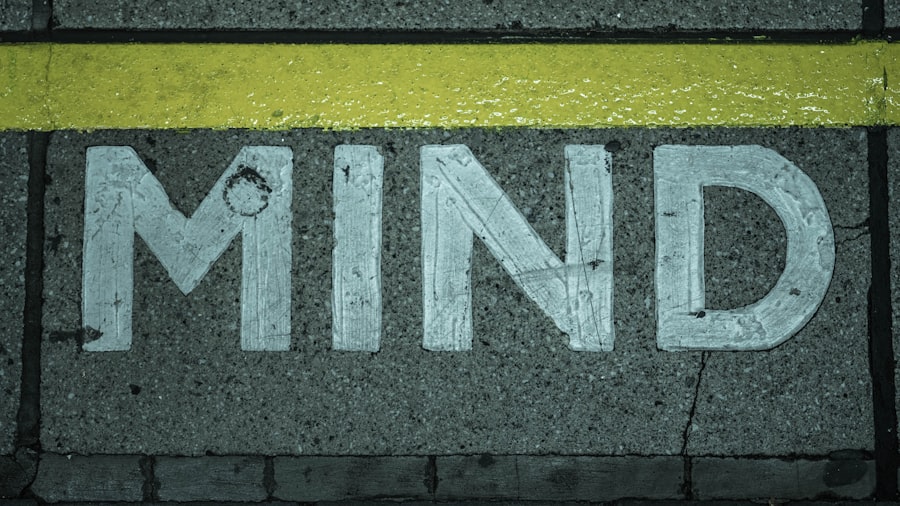You may have noticed that your mind often lingers on negative experiences more than positive ones. This phenomenon is known as the negativity bias, a psychological tendency where negative events or emotions have a more significant impact on your thoughts and behaviors than positive ones. It’s as if your brain is wired to prioritize threats and dangers, making it easier for you to remember and react to negative stimuli.
This bias can manifest in various ways, from dwelling on a critical comment to feeling anxious about potential failures, overshadowing the many positive aspects of your life. The negativity bias is not just a quirk of human psychology; it is deeply rooted in the way your brain processes information. Research suggests that negative stimuli activate certain areas of your brain more intensely than positive stimuli.
For instance, the amygdala, which plays a crucial role in processing emotions, is particularly responsive to threats. This heightened sensitivity can lead you to overemphasize negative experiences, making it challenging to maintain a balanced perspective. Understanding this bias is the first step toward recognizing its influence on your daily life and emotional well-being.
Key Takeaways
- The negativity bias brain is wired to pay more attention to negative information and experiences.
- The evolutionary roots of the negativity bias can be traced back to the need for survival and protection from potential threats.
- The negativity bias can lead to heightened emotional responses to negative stimuli, impacting overall well-being.
- Decision making is influenced by the negativity bias, often leading to a focus on avoiding negative outcomes rather than seeking positive ones.
- The negativity bias plays a significant role in social interactions, affecting how individuals perceive and respond to others.
Evolutionary Roots of the Negativity Bias
To grasp why you might be predisposed to focus on the negative, it helps to look at the evolutionary roots of the negativity bias. Your ancestors faced numerous threats in their environments, from predators to natural disasters. Those who were more attuned to potential dangers were more likely to survive and pass on their genes.
This survival mechanism has been hardwired into your brain, making it essential for your ancestors to remember negative experiences as a way to avoid similar threats in the future. This evolutionary perspective explains why you might find it easier to recall a harsh critique than a compliment. The ability to recognize and react to danger was crucial for survival, and as a result, your brain has developed a tendency to prioritize negative information.
While this bias may have served your ancestors well, in today’s world, it can lead to unnecessary stress and anxiety. Recognizing this historical context can help you understand that your inclination toward negativity is not a personal failing but rather a remnant of human evolution.
Impact of the Negativity Bias on Emotional Responses
The negativity bias significantly shapes your emotional responses, often leading you to experience heightened feelings of fear, sadness, or anger. When faced with criticism or failure, you may find that these emotions linger longer than any positive feedback you receive. This can create a cycle where negative experiences overshadow positive ones, leading to a skewed perception of reality.
You might feel as though you are constantly battling against a tide of negativity, which can be exhausting and demoralizing. Moreover, this bias can affect how you interpret situations and interactions with others. For instance, if someone gives you constructive feedback, you may focus solely on the negative aspects rather than appreciating the intent behind the message.
This can lead to feelings of inadequacy and self-doubt, further perpetuating the cycle of negativity. Understanding how the negativity bias influences your emotional landscape is crucial for developing healthier emotional responses and fostering resilience in the face of challenges.
How the Negativity Bias Affects Decision Making
| Aspect | Impact |
|---|---|
| Attention | More likely to focus on negative information |
| Memory | Remember negative experiences more vividly |
| Risk Assessment | Overestimate potential negative outcomes |
| Decision Making | More cautious and risk-averse choices |
Your decision-making processes are also heavily influenced by the negativity bias. When faced with choices, you may find yourself overly cautious or risk-averse due to an exaggerated fear of potential negative outcomes. This can lead you to miss out on opportunities that could bring joy or fulfillment simply because you are fixated on what could go wrong.
The tendency to weigh negative consequences more heavily than positive ones can stifle your ability to make balanced decisions. Additionally, this bias can create a feedback loop where fear of failure leads to avoidance behavior. You might choose not to pursue a new job opportunity or avoid social situations because you are preoccupied with the possibility of rejection or embarrassment.
This avoidance can limit your growth and prevent you from experiencing new and enriching opportunities. Recognizing how the negativity bias shapes your decision-making can empower you to take more calculated risks and embrace new experiences.
The Role of the Negativity Bias in Social Interactions
In social interactions, the negativity bias can significantly impact how you perceive others and how they perceive you. You may find yourself interpreting neutral or ambiguous comments as negative, leading to misunderstandings and strained relationships. This tendency can create a barrier between you and others, as you might be more focused on potential slights than on building connections and fostering positive interactions.
Furthermore, when you are preoccupied with negative thoughts about yourself or others, it can hinder your ability to engage authentically in social situations. You might hold back from expressing yourself fully or miss opportunities for meaningful connections because you are caught up in your internal narrative of negativity. By understanding how the negativity bias influences your social interactions, you can work towards cultivating more positive relationships and enhancing your overall social well-being.
Overcoming the Negativity Bias

Overcoming the negativity bias requires conscious effort and self-awareness. The first step is recognizing when this bias is at play in your thoughts and behaviors. By becoming aware of your tendency to focus on negative experiences, you can begin to challenge those thoughts and reframe them in a more balanced light.
This process involves actively questioning your negative assumptions and seeking evidence that contradicts them. Another effective strategy is practicing mindfulness. Mindfulness encourages you to stay present in the moment without judgment, allowing you to observe your thoughts without getting caught up in them.
By cultivating mindfulness, you can create space between yourself and your negative thoughts, making it easier to let go of unhelpful patterns and embrace a more positive outlook on life.
Strategies for Managing the Negativity Bias
To manage the negativity bias effectively, consider implementing specific strategies into your daily routine. One powerful approach is gratitude journaling, where you take time each day to reflect on and write down things you are grateful for. This practice helps shift your focus from what is lacking or negative in your life to what is abundant and positive.
Over time, this shift in perspective can help counteract the effects of the negativity bias. Another useful strategy is cognitive restructuring, which involves identifying negative thought patterns and replacing them with more balanced or positive alternatives. For example, if you catch yourself thinking, “I always mess things up,” challenge that thought by recalling instances where you succeeded or handled challenges well.
By actively working to reframe your thoughts, you can gradually weaken the grip of negativity on your mindset.
The Link Between the Negativity Bias and Mental Health
The negativity bias has profound implications for mental health. When left unchecked, this bias can contribute to anxiety disorders, depression, and other mental health challenges. The constant focus on negative experiences can create a cycle of rumination that exacerbates feelings of hopelessness and despair.
You may find yourself trapped in a loop of negative thinking that makes it difficult to see any light at the end of the tunnel.
If you find that your thoughts are overwhelmingly negative and impacting your daily life, consider reaching out for support from mental health professionals who can provide guidance and strategies tailored to your needs.
Recognizing that the negativity bias is not an inherent flaw but rather a cognitive pattern can empower you to take proactive steps toward improving your mental well-being.
Cultivating Positivity in the Face of the Negativity Bias
Cultivating positivity in the face of the negativity bias requires intentional effort and practice. One effective method is surrounding yourself with positive influences—whether through uplifting friendships, inspiring literature, or motivational content online. Engaging with positivity can help counterbalance the weight of negative thoughts and create an environment that fosters growth and resilience.
Additionally, consider incorporating acts of kindness into your daily life. Helping others not only benefits them but also boosts your mood and reinforces positive feelings within yourself. Whether it’s volunteering, offering support to a friend, or simply sharing a compliment, these small acts can create ripples of positivity that help diminish the impact of negativity in your life.
Harnessing the Power of the Negativity Bias for Personal Growth
While the negativity bias often feels like an obstacle, it can also serve as a catalyst for personal growth if approached with intention. By acknowledging your fears and insecurities—often magnified by this bias—you can use them as opportunities for self-reflection and development. For instance, if you fear public speaking due to past failures or criticism, confronting that fear head-on through practice or training can lead to significant personal growth.
When you recognize that negative experiences are part of life’s journey, you can learn valuable lessons from them rather than allowing them to define you. By reframing challenges as opportunities for growth, you harness the power of the negativity bias to propel yourself forward rather than hold yourself back.
The Negativity Bias in the Age of Social Media
In today’s digital age, the negativity bias is amplified by social media platforms that often prioritize sensationalism over positivity. You may find yourself scrolling through feeds filled with negative news stories or toxic interactions that reinforce feelings of anxiety or inadequacy. The constant exposure to curated highlights of others’ lives can exacerbate feelings of comparison and self-doubt.
To navigate this landscape effectively, consider curating your social media experience by following accounts that promote positivity and well-being. Engage with content that inspires or uplifts rather than contributes to feelings of negativity. Additionally, setting boundaries around social media use—such as limiting screen time or taking breaks—can help mitigate its impact on your mental health and overall outlook on life.
In conclusion, understanding and managing the negativity bias is essential for fostering emotional well-being and personal growth. By recognizing its roots in evolution and its impact on various aspects of life—from decision-making to social interactions—you can take proactive steps toward cultivating positivity and resilience in an increasingly complex world.
In exploring the concept of negativity bias in the brain, it’s essential to consider how our cognitive processes are influenced by various psychological factors. An insightful article that delves into related psychological phenomena can be found on Unplugged Psych. This resource provides a comprehensive look at how our brains are wired to prioritize negative information, which can significantly impact our decision-making and emotional responses. For a deeper understanding, you can read more about these intriguing insights by visiting the Unplugged Psych website.
FAQs
What is negativity bias in the brain?
Negativity bias refers to the psychological phenomenon where humans tend to pay more attention to and give more weight to negative experiences, emotions, and information compared to positive ones.
Why does the brain have a negativity bias?
The negativity bias is believed to have evolutionary roots, as it may have been advantageous for our ancestors to be more attuned to potential threats and dangers in their environment in order to survive.
How does negativity bias affect our behavior and decision-making?
Negativity bias can influence our behavior and decision-making by causing us to focus more on negative information, leading to increased anxiety, fear, and stress. It can also impact our perceptions of others and the world around us.
Can negativity bias be overcome?
While negativity bias is a natural and ingrained aspect of human psychology, it is possible to mitigate its effects through mindfulness, cognitive restructuring, and positive psychology interventions. Training the brain to focus on positive experiences and emotions can help counteract the effects of negativity bias.





